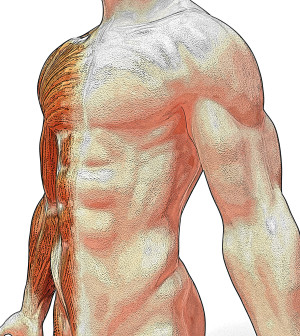- Skip Storing This Everyday Product in the Fridge Door
- Green Tea + B3 Pairing May Boost Brain Health
- Navigating Your Midlife Crisis: Embracing New Possibilities
- City Raccoons Showing Signs of Domestication
- Mapping the Exposome: Science Broadens Focus to Environmental Disease Triggers
- One Week Less on Social Media Linked to Better Mental Health
- Your Brain Changes in Stages as You Age, Study Finds
- Some Suicide Victims Show No Typical Warning Signs, Study Finds
- ByHeart Formula Faces Lawsuits After Babies Sickened With Botulism
- Switch to Vegan Diet Could Cut Your Greenhouse Gas Emissions in Half
Can Extra Time Outdoors When Young Reduce Nearsightedness?

Spending more time outside early in life may offer some protection against nearsightedness, a new study suggests.
The European study authors suspect that additional exposure to the sun’s ultraviolet B (UVB) rays may play a role in reducing nearsightedness — the inability to see clearly at a distance, also known as myopia.
“We found that higher annual lifetime UVB exposure, directly related to time outdoors and sunlight exposure, was associated with reduced odds of myopia,” the study authors wrote.
“Exposure to UVB between ages 14 and 29 years was associated with the highest reduction in odds of adult myopia,” they added.
The findings don’t “add a lot to the picture” of current research that links nearsightedness to time outdoors, said Ian Morgan, a vision researcher and visiting fellow at Australian National University. He was not involved with the study.
Also, the study wasn’t designed to prove a cause-and-effect link, it only showed an association.
Genetic factors are one known cause of nearsightedness, but they only account for a tiny fraction of cases, Morgan said. Something in the environment seems to be driving the rise of nearsightedness, but it’s not clear yet what that is, he said.
“In East Asia, close to 80 to 90 percent of children become myopic these days,” he said. “In Europe and the U.S., it might be 40 to 50 percent.”
Research suggests that nearsightedness is more common among educated people and less common among those who spend time outdoors. “Increasing the amount of time outdoors in schools in Taiwan over the past five years has led to decreases in the prevalence of myopia for the first time in 40 years,” Morgan said.
In the new study, researchers from King’s College London, the London School of Hygiene & Tropical Medicine and several other institutions looked at 371 Europeans with nearsightedness and 2,797 without the condition. All the participants were 65 and older.
The researchers estimated how much sun exposure — to UVB rays in particular — the study participants got from ages 14 to 29. More-educated people had more nearsightedness, the study found. Those who were believed to have gotten more UVB ray exposure had less, the research revealed.
So does that mean sun exposure is good for the eyes? Not necessarily. UVB rays coax the body into producing vitamin D. Interestingly, however, the researchers didn’t find a link between vitamin D and nearsightedness. It’s possible that something else about being outside — other than UVB rays — affected the risk of myopia, the study authors said.
What else might be going on? Exposure to so-called “visible light” could be a factor, Morgan said.
Dr. Donald Mutti, a professor at the Ohio State University College of Optometry, agreed. “UVB here seems to be a proxy for simply spending more time outside. The current thinking is that the brighter light outside stimulates a release of dopamine from the retina and that dopamine slows down the growth of the eye, preventing myopia.”
So should kids spend more time outside to help them avoid nearsightedness? “Send kids outside, but with proper attention to sunglasses and sunscreen. UVB is still damaging,” Mutti said.
However, “our group’s work has shown that being outside only affects myopia before it occurs. Once a child needs glasses, being outside has no effect on myopia,” he said.
The study appears Dec. 1 in the journal JAMA Ophthalmology.
More information
Learn more about nearsightedness from the U.S. National Eye Institute.
Source: HealthDay
Copyright © 2025 HealthDay. All rights reserved.










